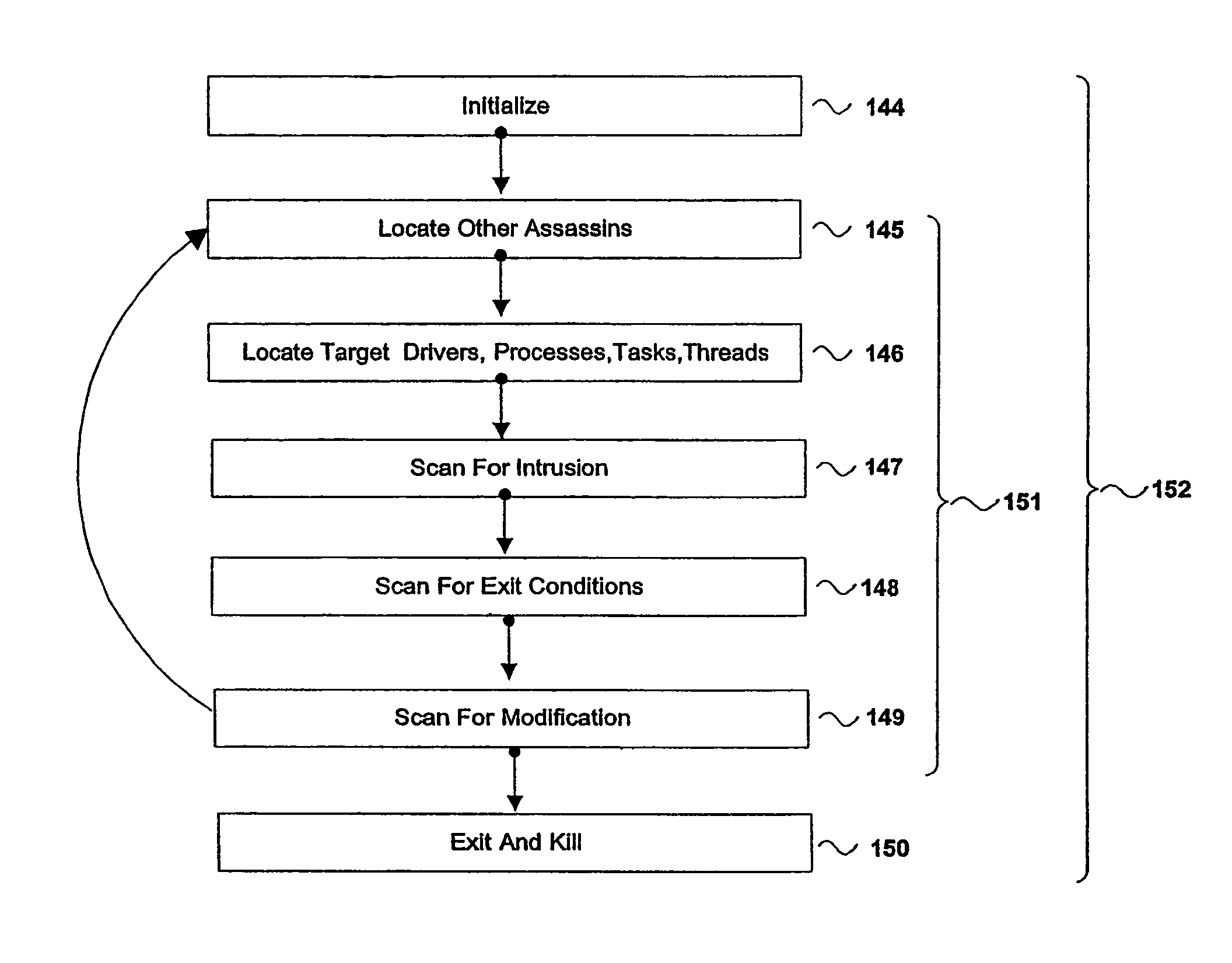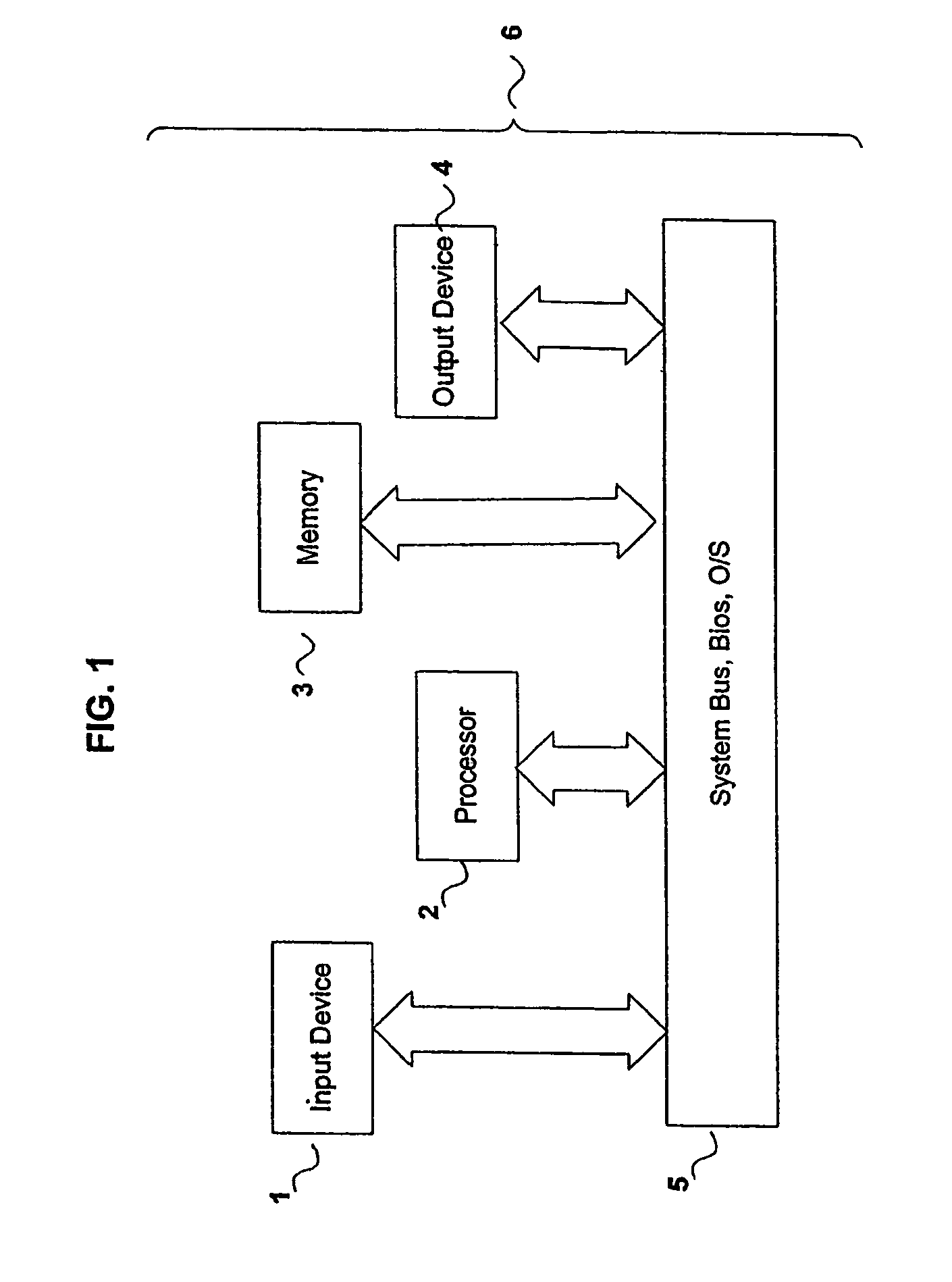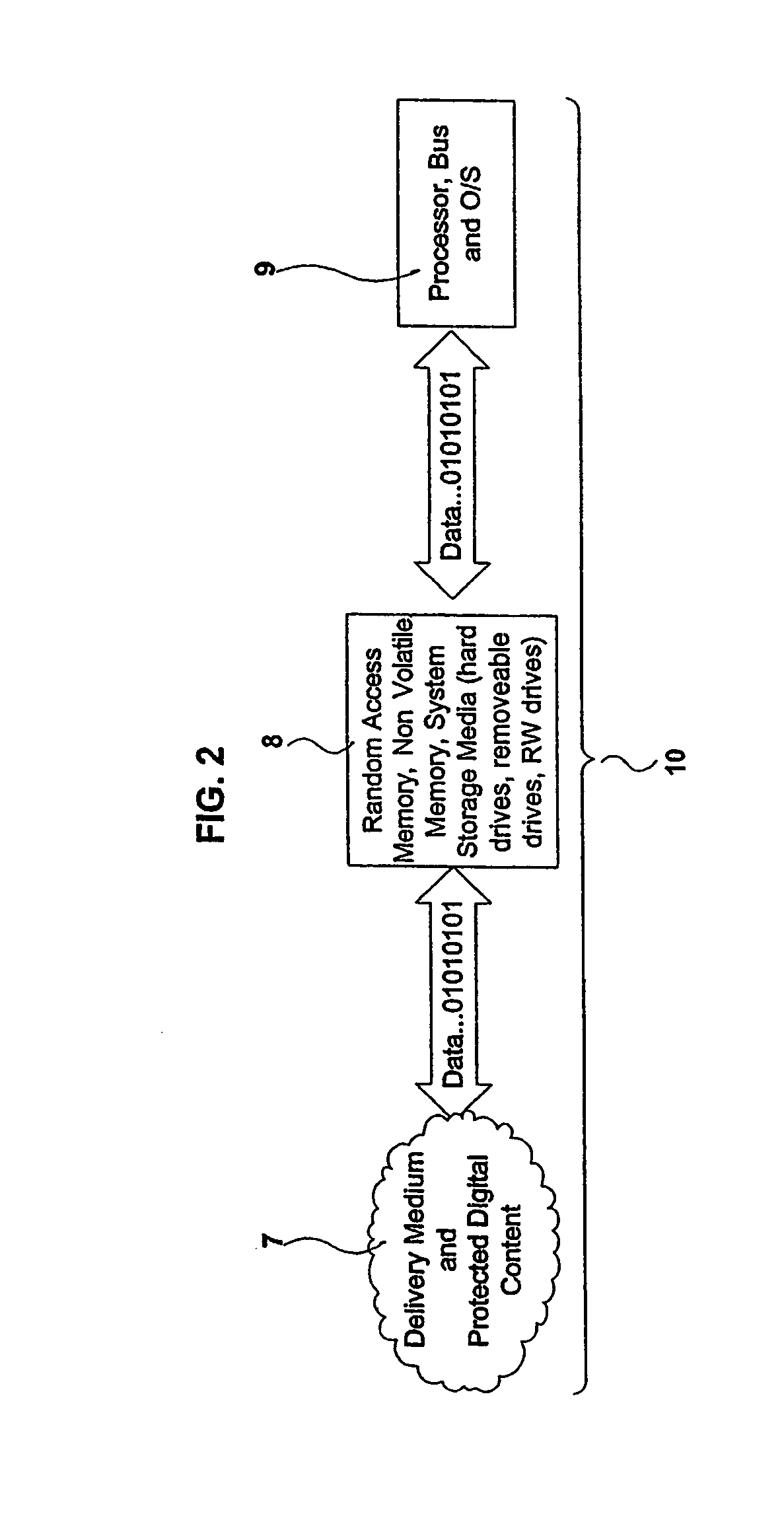Systems and methods for preventing unauthorized use of digital content
a technology of digital content and unauthorized modification, applied in the field of digital information protection, can solve the problems of increasing losses in the electronic publishing industry, piracy and unauthorized modification of content, and the industry is facing increasing losses
- Summary
- Abstract
- Description
- Claims
- Application Information
AI Technical Summary
Benefits of technology
Problems solved by technology
Method used
Image
Examples
embodiment 67
[0100]In an alternative embodiment 67, the content is placed partly between the files within the file system 62, and partly in space outside the file system, namely the extra-file system 63.
[0101]The concept of translocation as implemented in this invention and as illustrated in FIG. 9 is described with reference to examples 65, 66 and 67. Assuming that the apparent target is a hacker's tool such as “ProcDump.exe” and the translocation replacement is a stub executable whose sole instruction is to exit, any attempts to execute this hacker's tool, such as by double-clicking on it with a mouse, would result in the execution instead of the stub, which would immediately exit, such that the execution of ProcDump would appear to have failed to an outside observer with no apparent reason why. The actual mechanisms by which this process operates are as follows. The protected content is copied from its former location 55 to a new location 56; it may be optionally encrypted during the copy pro...
first embodiment
[0153]In the code example below, the assassin process determines the identity of another assassin process (this is a two-assassin example) and instances 146, and monitors them for exit conditions 148. Upon an exit condition, this embodiment attempts to kill other assassin processes and then kills itself 150.
[0154]
/ / Wait for a target entity to exitstatic bool WaitAndDeleteInstance( / / / / DWORD in_dwIdentWaitProc1, / / 1st proc to wait for DWORD in_dwIdentWaitProc2, / / 2nd proc to wait for DWORD in_dwIdentKillProc, / / proc to kill if proc 1 exits char* inp_szFn, / / instances to delete char* inp_szFnFk, / / more instances to delete char* inp_szFnDel / / add'l instance to wait for (NULL for assassins)){ HANDLE ahProc[2] = {NULL, NULL}; / / handles to wait on DWORD dwRes; / / result from wait int ii; char szFnWait[MAX_PATH]; / / instance to wait for char szFnDel[MAX_PATH]; / / instance to delete bool fTargetInsOpenFailed = false; HANDLE hTargetIns; char szIsDel[MAX_PATH];...
PUM
 Login to View More
Login to View More Abstract
Description
Claims
Application Information
 Login to View More
Login to View More - R&D
- Intellectual Property
- Life Sciences
- Materials
- Tech Scout
- Unparalleled Data Quality
- Higher Quality Content
- 60% Fewer Hallucinations
Browse by: Latest US Patents, China's latest patents, Technical Efficacy Thesaurus, Application Domain, Technology Topic, Popular Technical Reports.
© 2025 PatSnap. All rights reserved.Legal|Privacy policy|Modern Slavery Act Transparency Statement|Sitemap|About US| Contact US: help@patsnap.com



